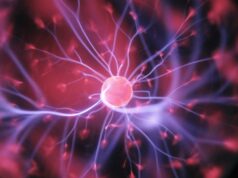
A randomised, triple-blinded clinical trial involving 35 women has found that active transcranial direct current stimulation (tDCS)—delivered at an intensity of 2mA and across a total of 10 sessions—may be an effective treatment option for patients with fibromyalgia.
This finding has been published in Neuromodulation: Technology at the Neural Interface by Eduardo Henrique Loreti (Centro Universitário da Grande Dourados, Dourados, Brazil) and colleagues. The authors report improvements regarding pain, fatigue and quality of life in their study’s treatment arm.
Loreti and colleagues state that the aim of their study was to analyse the effects of 10 sessions of active tDCS (2mA), with the anodal stimulation target being the left primary motor cortex (M1) region of the brain. A conventional tDCS device was used to deliver 13 minutes of stimulation, followed by a 20-minute break, and then a further 13 minutes of stimulation, in each of these 10 sessions.
“To the best of our knowledge, this is the first article that uses this protocol in patients with fibromyalgia,” the authors note. “The main hypothesis is that the protocol would be effective in decreasing pain and that the results would last for up to 90 days.”
The primary outcome was a change in the visual analogue scale (VAS) and the Survey of Pain Attitudes (SOPA) pain score at the end of treatment, after 30 days, and 90 days after the end of treatment. Secondary outcomes included changes on the Fibromyalgia Impact Questionnaire, Hamilton Anxiety Rating Scale, Hamilton Depression Rating Scale, World Health Organization’s Quality of Life Questionnaire and Fatigue Assessment Scale.
Thirty-five women with fibromyalgia were divided into two groups in the trial—an active tDCS group and a sham tDCS group.
Loreti and colleagues report that the active tDCS group showed improvements in pain after 10 sessions (p<0.001), after 30 days (p<0.01), and after 90 days (p<0.001), as compared with sham tDCS.
“In addition, improvement in quality of life and fatigue was observed in the active tDCS group,” the authors add.
As such, they conclude their report by stating that the specific active tDCS treatment protocol used here proved to be an effective therapy for patients with fibromyalgia.












